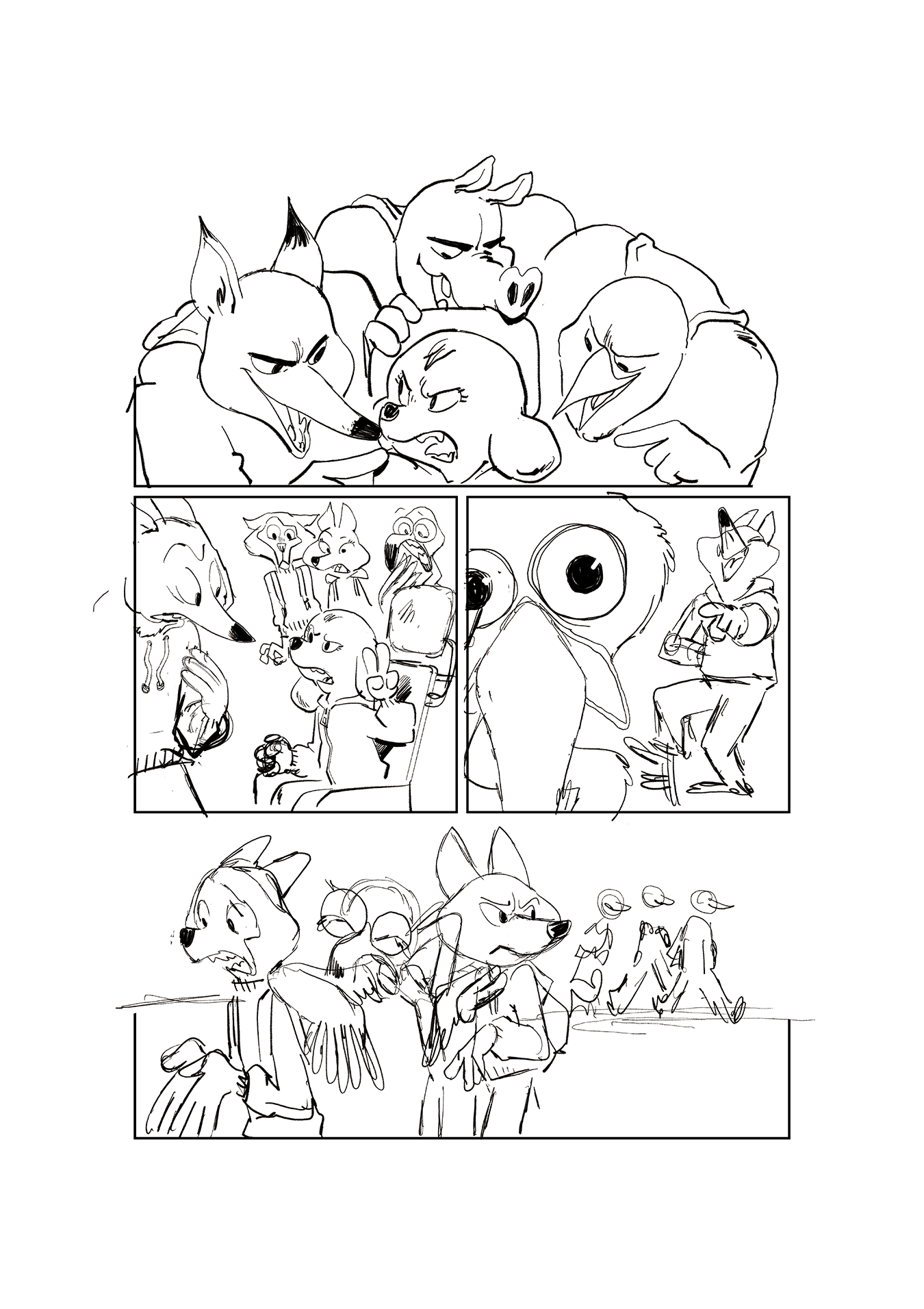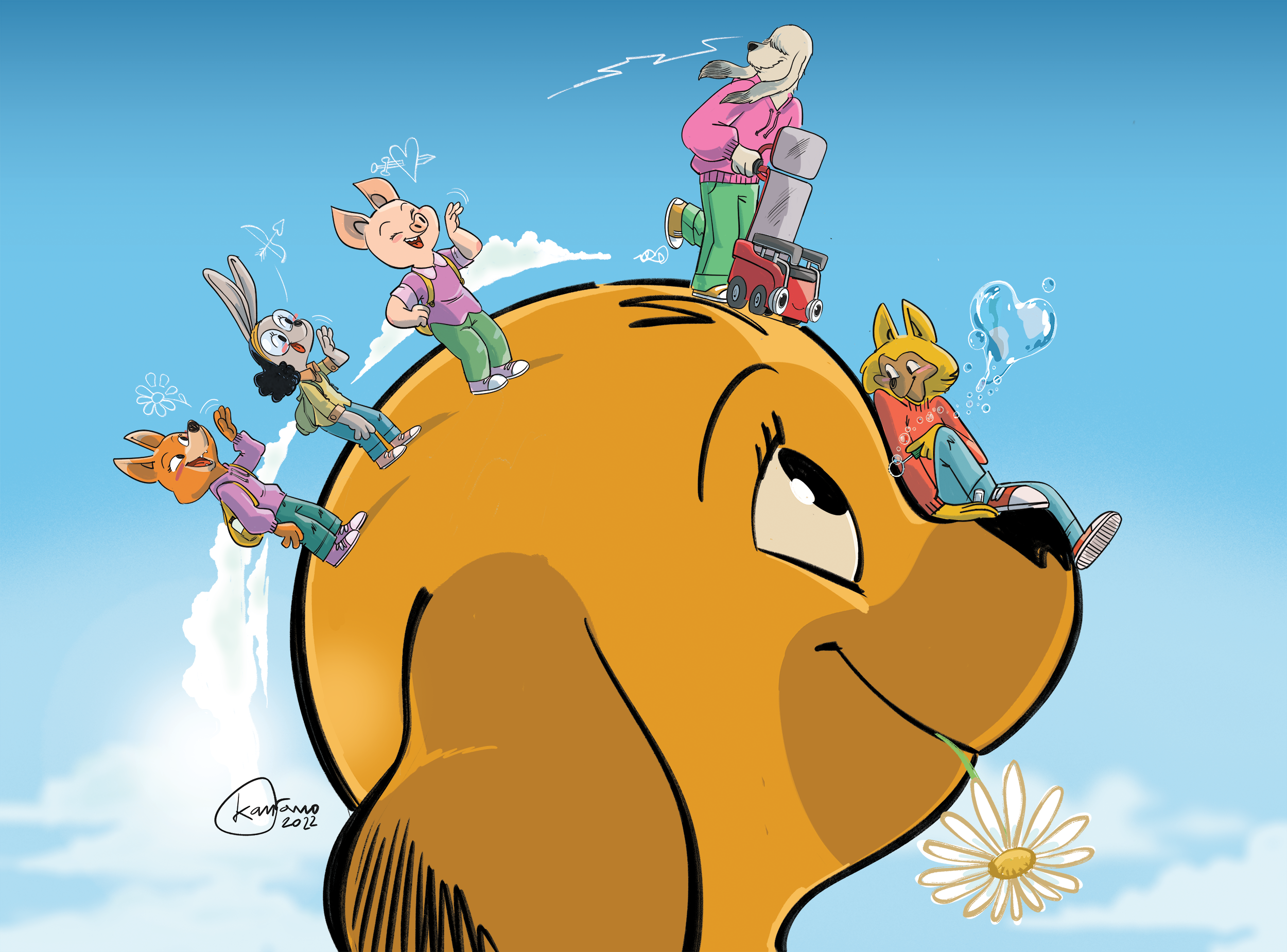La SMAgliante Ada - Vol. 3
Agency: Sec and partners
Client: Roche / Centro Nemo / Famiglie SMA
Comicwriters: Danilo Deninotti, Roberto Gagnor, Giorgio Salati
Cartoonists: Giuliano Cangiano, Gianfranco Florio, Mattia Surroz, Luca Usai, Lele Virzì
Our clients, the Centri Clinici NeMo (NeMo Clinical Centers) and the Associazione Famiglie SMA (Families SMA Association), supported by Roche SpA, had a specific need: to discuss spinal muscular atrophy (SMA) in a fresh and unique manner. They aimed to broaden the scope of the conversation, raise awareness about the issue, and address the topics of diversity and scholastic inclusion for children with disabilities in a more comprehensive way. To achieve this, they sought a tool that was both direct and gentle, and a comic book immediately appeared as the most suitable choice.
The Centri Clinici NeMo, located in Milan, Rome, Trento, Brescia, Naples, and Ancona, are specialized centers that provide multidisciplinary care and treatment for SMA patients. They have collaborated with major neuromuscular disease associations in Italy, including the Associazione Famiglie SMA, to develop common projects and initiatives such as the NeMO Clinical Centers, the Stella toll-free helpline for family support, and the registry for neuromuscular diseases.
The Associazione Famiglie SMA plays a vital role in supporting patients with SMA and has established significant relationships with various neuromuscular disease associations in Italy. They have collaborated with Novartis Gene Therapies on the "One Gene" Patient Support Program, which aims to provide support to SMA patients undergoing gene therapy treatment for a period of 18 months after treatment.
By utilizing a comic book as a communication tool, our clients aimed to present information about SMA in a visually engaging and accessible format. This approach allows them to reach a wider audience, including children, families, and individuals interested in learning about SMA and related topics. The comic book serves as a direct and mild means of conveying information while addressing the importance of diversity and scholastic inclusion, promoting greater understanding and awareness.
Overall, the Centri Clinici NeMo and the Associazione Famiglie SMA, in collaboration with Roche SpA, are working to bring attention to SMA through innovative approaches like the creation of a comic book. By utilizing this tool, they hope to raise awareness, broaden the conversation, and address important issues related to SMA, diversity, and the scholastic inclusion of children with disabilities.
We were given carte blanche in terms of creativity, and we received significant support from a medical-scientific perspective to navigate an entirely new context for us. With the chosen theme, there was a risk of falling into a pietistic and condescending narrative, but our creative team, led by Danilo Deninotti (an experienced copywriter and screenwriter of "Topolino"), successfully envisioned and crafted a narrative universe with fresh and humorous stories. In this universe, illness is merely one aspect that distinguishes our protagonist's life.
Our protagonist, Ada, is an anthropomorphic dog who experiences limited mobility due to a specific condition, necessitating the use of a wheelchair.
The concept of having carte blanche in this context refers to the complete freedom and authority given to the creative team to develop their ideas and approach to storytelling without constraints. The team was able to utilize their creativity while receiving substantial support from the medical-scientific community to ensure authenticity and accuracy in portraying Ada's condition.
By adopting a fresh and lighthearted approach, the creative team aimed to present Ada's life and experiences, highlighting that her illness is just one aspect of her character. Through this storytelling, they aimed to challenge preconceived notions and promote inclusivity by showcasing the diverse aspects that shape Ada's life.
The collaboration between the creative team and the medical-scientific community allowed for the development of a narrative universe that strikes a balance between creativity and a grounded understanding of the condition Ada faces. This approach enables readers to engage with the character and empathize with her while enjoying a humorous and enjoyable story.
Overall, the team's goal was to create a narrative universe that goes beyond a singular focus on illness, providing readers with entertaining and relatable stories that explore the diverse experiences and characteristics of their anthropomorphic dog protagonist, Ada.
The complete process - from the storyboard to the executive panel
In order to bring the world of Ada to life and develop all the other characters in the stories, I collaborated closely with three skilled screenwriters: Roberto Gagnor, Giorgio Salati, and Danilo Deninotti. Building upon their insights and suggestions, I created a "graphic bible" that encompassed all the visual elements, including character design and illustrative style, which would guide the other artists involved in illustrating the stories. The talented artists Gianfranco Florio, Mattia Surroz, Luca Usai, and Lele Virzì were responsible for bringing these elements to fruition.
By establishing a collaborative process with the screenwriters and artists, we ensured a cohesive and consistent visual representation of the characters and the overall world of Ada. This allowed for a seamless storytelling experience across the volumes of Ada's adventures
I’ve already talked about this when I wrote about Ada volume 1 and Ada volume 2.
Once the narrative universe was established, each of the screenwriters involved in the project took on the task of developing a subject and the corresponding script, building upon the themes requested by our clients. Subsequently, the artists collaborated with the screenwriters to transform the scripts into storyboards.
These storyboards underwent approval from the scientific committee before progressing to the next stage, which involved creating the executive panels. The executive panels encompassed the process of refining the storyboards, including the stages of penciling, inking, and coloring.
Ultimately, these panels were collected and compiled into the volume titled "Le SMAglianti avventure di Ada".
From the sketches to the final version of Ada 3 cover
The positive experience surrounding the volume "Le SMAglianti avventure di Ada" led to its immediate translation into 11 languages, highlighting the widespread appeal and reception of the work. This success prompted the creation of a trilogy, expanding the stories and delving into various aspects of Ada's life and the lives of her friends.
As a result, the adventures and experiences depicted in the comic book series extended beyond a limited number and continued to captivate readers across different languages and cultures.


















